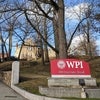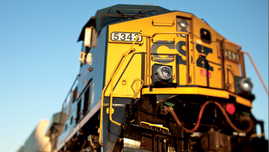
Q&A: With $108M, new West-East Rail director seeks to get long-awaited project on track
 Image | Courtesy of MassDOT
Andy Koziol, the state's West-East Rail director
Image | Courtesy of MassDOT
Andy Koziol, the state's West-East Rail director
Thanks to a recent $108-million federal grant, the Massachusetts Department of Transportation is preparing to make progress on the long-awaited West-East Rail, a project expected to see an increase in passenger train service and designed to strengthen the link between the Eastern and Western Massachusetts. The first step in this process is enabling two daily Amtrak round trips between Boston and New Haven via Springfield, referred to as the Inland Route.
MassDOT is beefing up its staffing related to this endeavor; on Feb. 6, Gov. Maura Healey announced the appointment of Andy Koziol as the state’s West-East Rail Director.
Koziol joined the department in June 2023 as director of rail & transit, following a 12-year stint at the Rhode Island Department of Transportation. WBJ sat down with Kozoil to discuss what needs to happen in order to make frequent west-east service through Worcester a reality.
Let’s start with the name. We’ve seen it referred to as East-West Rail, but now it seems that West-East Rail is the preferred lingo. Is that something that’s intentional?
Yes, it was certainly intentional. You’ll still hear it both ways going forward. In 2021, the premier study on this topic was the East-West Passenger Rail Study, but it’s a nod to putting west first.
It seems like the idea of West-East Rail has evolved over the years and the goal posts have shifted a bit as administrations and policy priorities change. How would you describe to the average resident what this project is at this moment?
So West-East Rail is a component of our overall compass rail vision, the commonwealth-wide vision for intercity, passenger rail. The west-east component of this – opposed to the north-south, which is the largely existing line from New Haven to Springfield to Greenfield – is proposed to run from Boston to Springfield. We are moving forward to advance the outcomes of that study.
However, it’s going to be done incrementally, and the scope of it is going to be a little bit different. So incrementally, there’s a program of projects, which we’ll start with the Inland Route, our recent federal award, which will bring two passenger rail round trips from Boston to Springfield to New Haven.
We are going to be evaluating Boston to Albany as a separate corridor. The reason we’re extending the geographic extent out to Albany really has to do with that characterization of the intercity, passenger rail rather than a commuter rail, which is a more city, business-focused. This is a different type of service to connect different metro areas. Albany, for example, has a lot of different options once you get there, as opposed to Pittsfield.
What’s your pitch to business leaders on this? How will this project lead to an improvement in the region’s local economy?
Mobility is a kind of foundational aspect of where people choose to live, where they choose to work, what sort of institutions they can reach, and what sort of services they can access. This added mobility as another option is really quite beneficial to the business community and local leaders.
The current legislatively-mandated service area for the MBTA only reaches as far west as Leicester. How does this impact this project?
I can’t think of any particular impacts because this is a different type of service. It’s not going to be operated by the MBTA. It’s most likely going to be Amtrak-operated much like our existing services on the north-south line. So any sort of service areas or legislation related to MBTA would not be relevant to this.
The first initial step is increasing the daily Amtrak service between Boston and Springfield to two daily round trips. After that, what’s the next immediate step toward West-East Rail travelers will notice?
A goal we have together with Amtrak is to increase frequencies in the future. But once those two roundtrips are added, it gives us a lot of abilities to kind of rework the north-south services we have right now. So we can have more transfers and meets at Springfield to make the service more usable for people in that area. So if you want to travel from Greenfield to Boston, you’ll have that option of making a transfer at Springfield.
It looks like Amtrak diesel trains are going to be the main focus here. How about electrifying the line? Would that lead to better service if it happened?
It’s certainly something that’s top of mind for us. Of course, there are some challenges. For one, these tracks are not wired, so that’s a whole other aspect if you’re going to electrify. Then, there are other options as far as new technologies in locomotives coming up like battery-electric, which are really not as well adopted in systems across the country right now. On top of that, since we do use Amtrak as our operator, it’s almost like a turnkey operation. Working a brand new type of locomotive into their fleet and their mechanical staff is a big challenge. So it’s something we’ve had put under consideration, but it’s not an active project in the works.
Touching upon infrastructure, what is the biggest infrastructure issue needing to be addressed on the existing line between Springfield and Boston?
We see capacity as our biggest issue right now. Much of the line from Worcester going out to Springfield is single track. Even prior to executing funds for this recent inland award, we’ve already begun modeling – along with CSX and Amtrak – which will help us identify how to get those extra passenger round trips. Our early insight right now is adding areas of double tracking and some passing sidings.

Speaking of CSX, they own the line west of Worcester. It seems like problems with freight traffic are a major cause of passenger rail delays across the country. Is the state actively looking to acquire this part of the line, and if not, how does that impact this project?
Acquisition has not come up at this point. CSX does own the line from Worcester all the way into New York and beyond. So it’s going to be a factor. It’s something we’re aware of and we’ve been working quite closely with CSX and quite amicably. Through funding we’ve received and some of the infrastructure proposals, we can really have it be a win-win for both where we can upgrade tracks to increase the capacity for passenger trains, but at the same time, there will be newer tracks CSX can benefit from.
A bus trip from Springfield to Boston costs around $10 to $15, with trips from Pittsfield costing about $25. Travel time seems to be the main concern here, but are there concerns the cost of this project will lead to ticket prices only wealthy travelers can afford?
There hasn’t really been any sort of planning as far as what the fares would be. This project is still quite a ways out right now, so I can’t speak to that specifically. The fares we can anticipate are going to be pretty consistent with what you see on Amtrak for similar distances.
Plans call for a stop in Palmer, and there’s been debate over whether Springfield or Pittsfield should be the terminus of the line. How do you balance giving access to smaller cities and rural areas with decreasing overall travel times?
It is an intercity service, so it’s kind of unlike the MBTA Commuter Rail, which has frequent local stops. Intercity service is high-speed express service between metro areas. In general, we would seek to have limited new stops, but Palmer makes an awful lot of sense, considering its proximity to UMass Amherst. It’s something we’re advancing through design right now. We’re just kicked that off, so construction funds haven’t been identified, but Palmer is a really great candidate for an additional station along the corridor.
This interview was conducted and edited for length and clarity by WBJ Staff Writer Eric Casey.













0 Comments